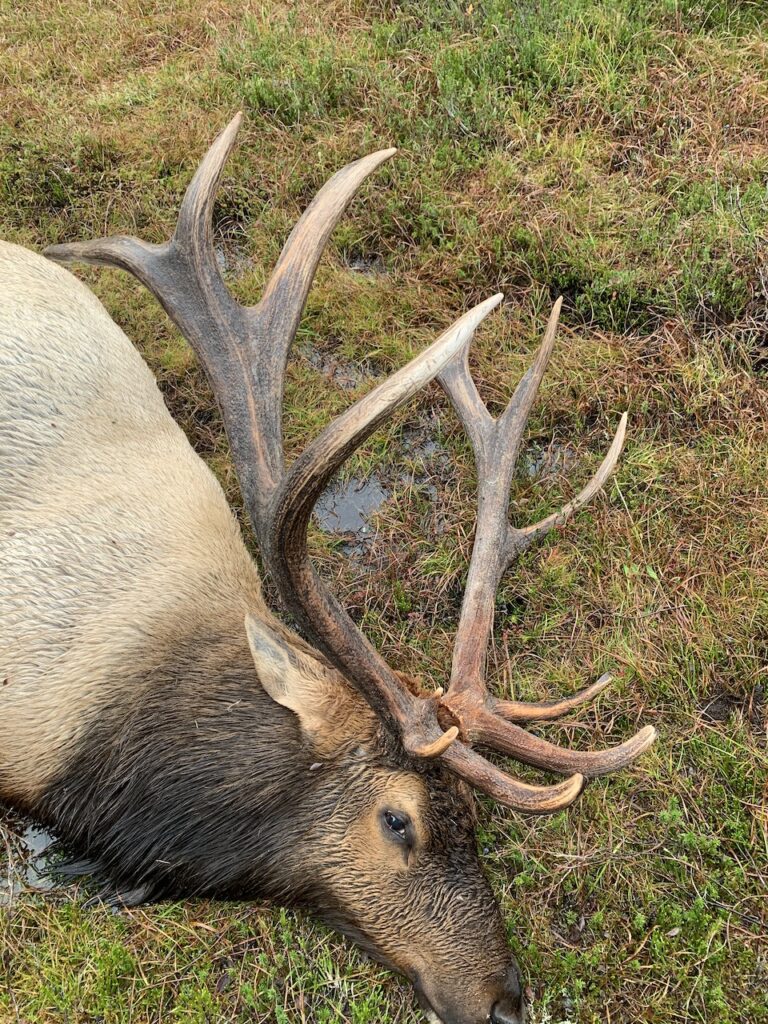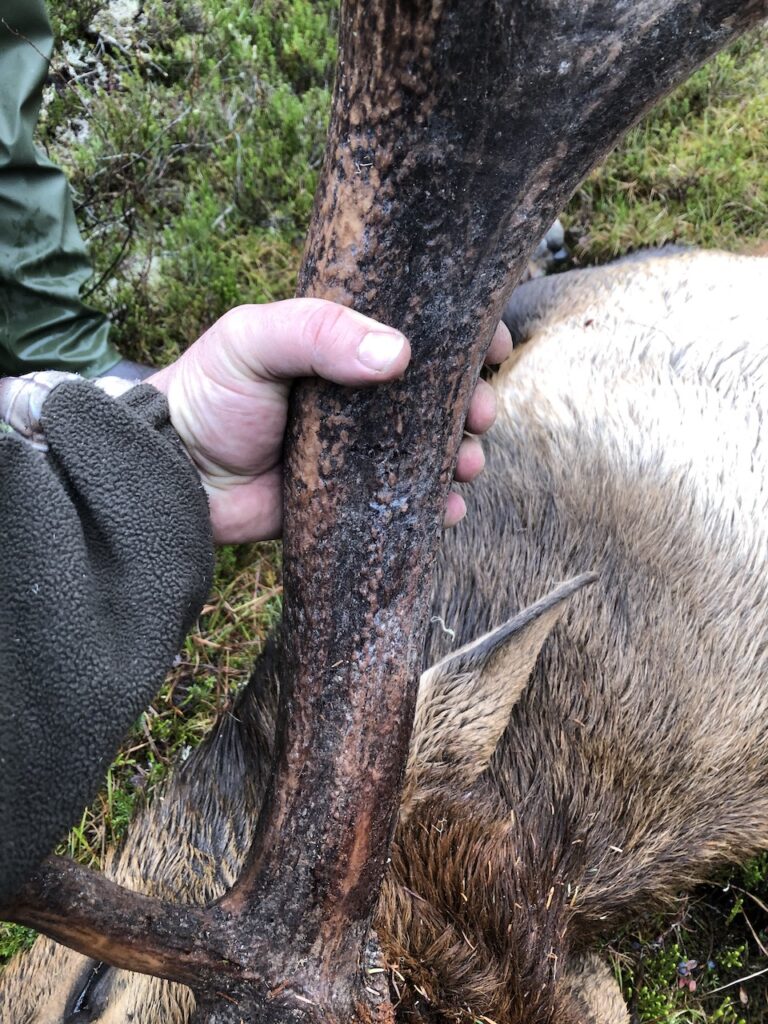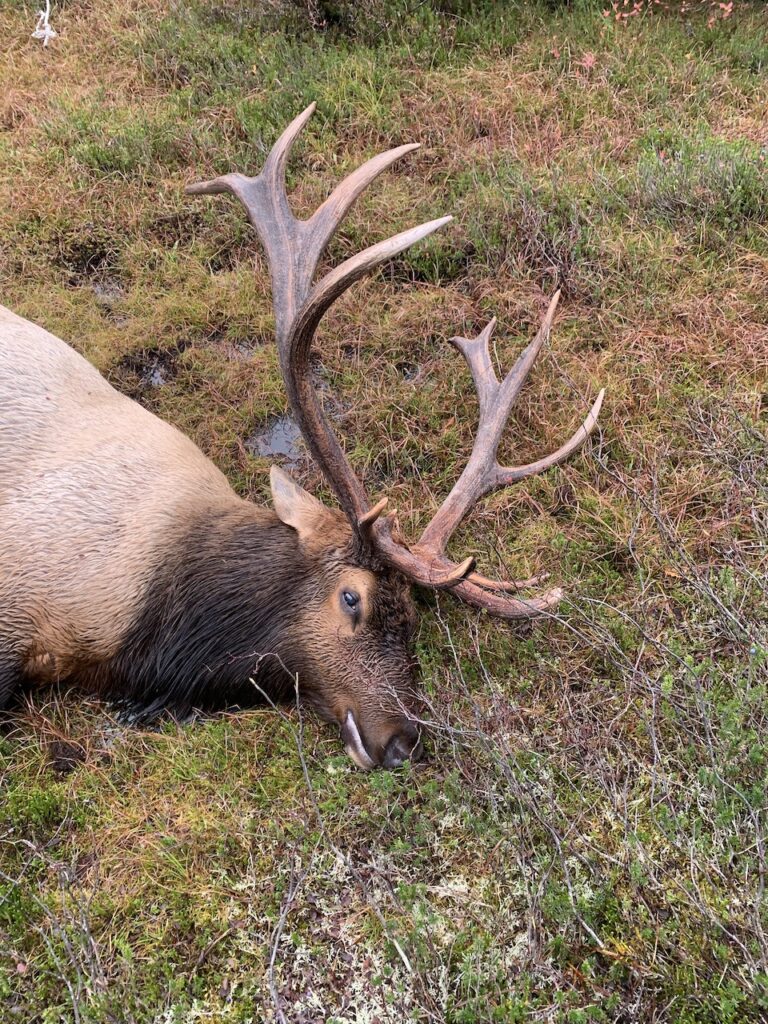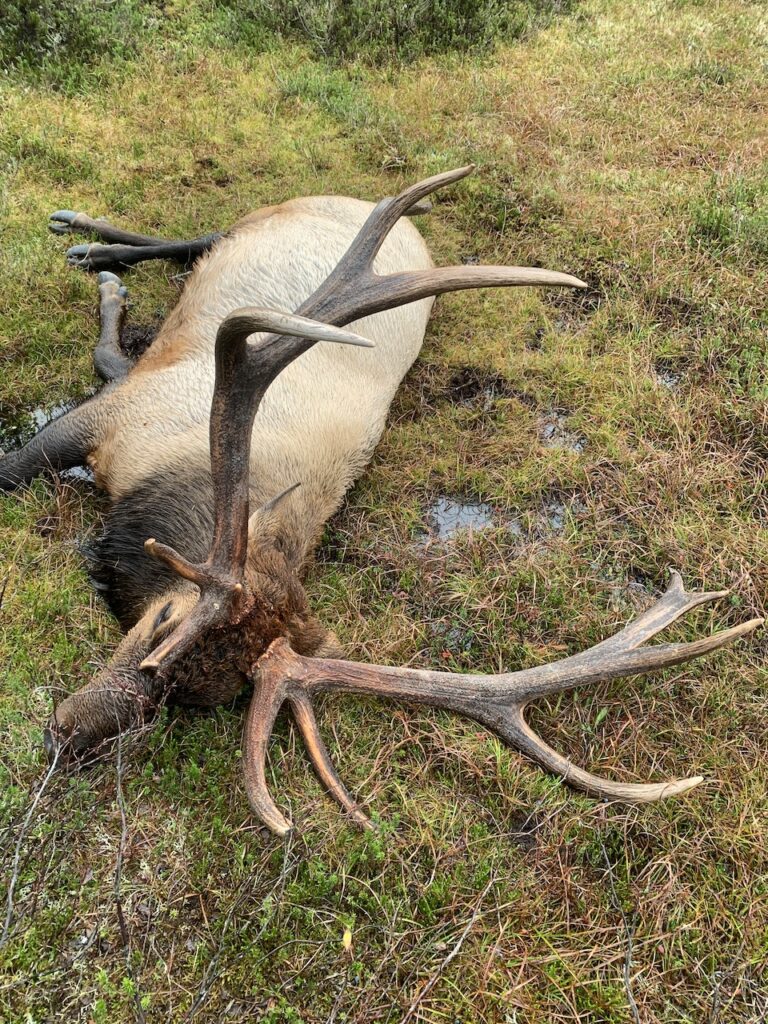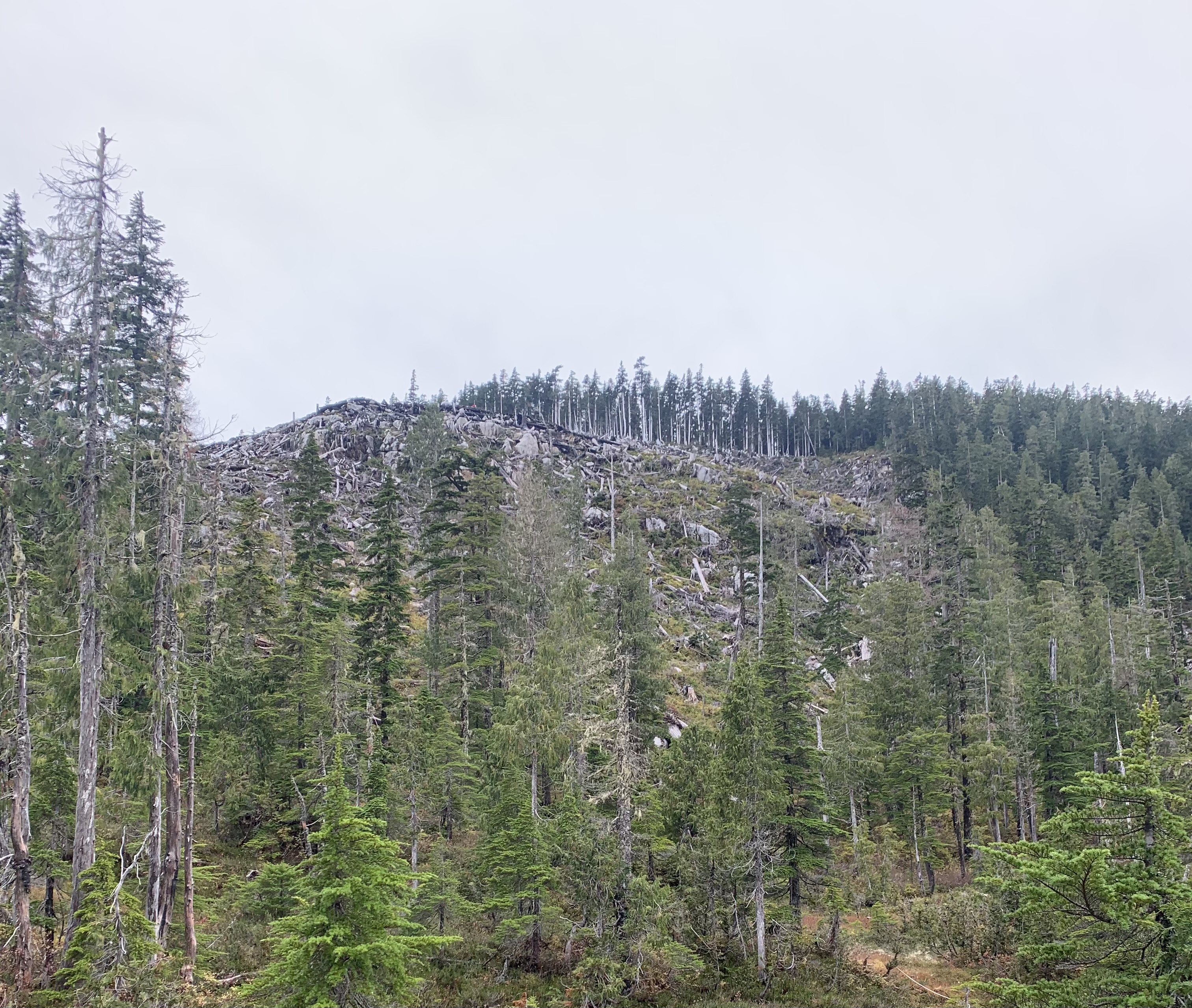(Written by a NSFG Member)
So to back up a little bit, I was drawn for a 2020 LEH Roosevelt Elk draw on Vancouver Island. The odds were 115:1, so I knew (and was told by everyone I talked to) that this was going to be one of those “once in a lifetime” type hunts. I knew I had to put my all into this, everything from preparing, scouting, and “putting boots on the ground”. I figured that if I didn’t put my best foot forward, regardless if I got anything or not, it would haunt me for the rest of my life. As famously said by Hunter S. Thompson – “anything worth doing, is worth doing right”.
As such, during the summer I spent time at the range practicing my “long range” shots at 200 yards +, scouring google maps for every possible drainage and mountain side that may hold elk, reading B.C. elk biology reports, and finally making trips out to Vancouver Island (I might add that I had just started a new full-time job and had only two weeks of vacation to use). The first trip, I got totally skunked and didn’t see a single elk (until on the car ride home on the side of the highway). However, on second trip out in September during the rut, I met up with some friends, and was able to put glass on some bulls.
Fast forward to October, opening day is on Saturday. My buddy and I take the ferry over on Thursday to meet up with another one of my friends to do some last minute scouting before the season starts. However, on the drive-in I immediately realized how wet this hunt was going to be. I had heard about Vancouver Island rain in the fall, however, when they say it’s like standing in a shower with the tap turned on full blast, they weren’t kidding! Luckily I had brought my Helly Hansen jacket and pants, as it definitely was going to be used. When we arrived at camp we were welcomed with pounding rain, and immediately grabbed shovels and started digging trenches to try and divert some of the water that was filling our “swimming pool”. As I dug soaking wet, I couldn’t help but smile knowing that there was definitely going to be some of “embrace the suck” involved in this hunt.
The next day (Friday), we spent the day scouting. Surprisingly it didn’t rain this day, however, it was mostly spent driving up FSRs where I had seen elk in the summer, glassing for any possible movement. At the end of the day we spotted a 7×3 bull with a small group of cows, which was reassuring to me. It was good to know that they were still bedding with cows during the “post-rut” and thus hadn’t disappeared into the thick forests as bachelors.
Opening day I awoke with excitement, it was like Christmas morning as a child. All the planning, preparation and scouting had come down to this. Regardless if I got anything, I reminded myself that I was so blessed and fortunate to just have the opportunity to chase these beautiful animals. I had to keep reminding myself this, as for the next 3 days it poured straight (by the end our swimming pool started to look more Olympic sized). During these days we would hunt dawn to dusk, but didn’t see a single elk. However, I kept positive and just enjoyed the company I was with, having laughs and looking forward to drinking home-made wine at the end of the day to warm up.
Tuesday morning the rain finally stopped. In my gut I knew that this was going to be the day. At the crack of dawn we posted up at a spot where we had seen lots of fresh sign, including massive trees and brushes all freshly thrashed up. At about 1000 yards away we started glassing a clear cut and sure enough spotted what appeared to be a rag-horn bull and a cow. After watching the stragglers for a while, we were ready to move to another spot when I spotted something out of the ordinary. I turned to my buddy and said “I think I see at least 15-20 cows on the side of this clear cut”, immediately everyone jumped back onto the glass and confirmed what I was seeing. We kept scanning the herd trying to spot something with antlers, and sure enough I spotted a nice looking 6×6 and then my buddy called out “I see a giant looking 7×7”. Two big bulls in a herd?! I was thinking that the satellite 6×6 was a shooter, let alone this 7×7! However, the impracticability of getting within shooting distance of these bulls quickly sank in. We were currently glassing over valley, with the herd on the direct opposite side. Thus, the only way to get within shooting distance was to sneak along the edges of the surrounding clear-cut and pray that we didn’t get winded. Sure enough, that’s exactly what happened, we tried to close the distance but a quick whiff by a cow sent the herd barreling over the side of bank, never to be seen again. They were in an optimal location for survival, easy to detect predators with a 360 field of view, not to mention easy escape routes.
I was a little bummed that I couldn’t put my scope on one of the bulls, but at the same time was just excited that I wouldn’t being going home not seeing any animals. They’re out there I kept reminding myself, it’s just a matter of time. After a quick lunch, we returned to one of the spots we had visited previously with no luck, however felt that it was really “elky”.
Similar to the previous location, there was a valley with a stream running through. However, there were no clear cuts on either side, just a swamp at the bottom of this valley. Our game plan was that we would slowly move along and hug the mountain side of the FSR, hopefully then getting into a position with the wind blowing towards us where we could peer down into the valley. As we quietly inched our way along this FSR, I made a few quick trips to the side of the road to peer down into the valley, “guy’s I see a bunch of bedded cows down at the bottom of this valley”, I whispered to my friends. I wanted to stay and glass for a surrounding bull, but knew that I should go back and hug the side of the road in order to not get busted. After what seemed like an eternity of creeping we finally reached the end of the FSR, I peered over the edge and saw what I at first though were thick tree branches by a tree. However, these tree branches slowly turned and I could see the slight outline of what appeared to be an elk. “Hey, I think I see a big bull over here”, I whispered to my friends.
Before they could peer over the edge to see, I noticed that the cow elk started to stand-up…the wind had changed and was directly blowing down into the valley. Everything started to move in warp speed for me, by this time all the cow elk had stood up and started to dart in a single-file line back into the forest. The bull elk finally stands up and I notice how big he looks. “Yeah that’s a shooter I said to my buddy”. Unlike the cow elk, he had no rush and followed behind them in a nonchalant and lordly way. As they are piling into the forest, I quickly scramble to chamber a round and dive into prone position. As the bull is just about to exit the edge of the forest line we let out a cow chirp, he turns around. I let out a few deep breaths and squeeze the trigger, the 180 grain 30-06 round stops him in his tracks and within seconds he’s on the ground.
I stop to catch my breath, “did that actually just happen?” I now scream to my buddies. We put a rangefinder on him and the distance is 250 yards away (luckily I had zeroed my rifle in at 200 yards). I cut my tag and stop to take a few pictures from a far… now the real fun begins we all said. With a steep decline into the valley, not to mention it being littered with stumps and logs, winching him out becomes an unrealistic endeavor. The sun is slowly starting to set, so we decide that the safest route is to go down and gut him and pack him out early next morning.
When we arrive early the next morning, we see that it had snowed 4-6 cm the night before. “Great, this 45 degree climb uphill with 100 pound packs of meat just got even more fun”, I’m sure was what both my friends were thinking about me at this point. I was definitely getting my fair dose of “embrace the suck”. By the 4th trip (with night time rolling in and a headlamp on) I was crawling on my hands and knees and praying to get me off this god-forsaken mountain. As I sat on a log halfway up the mountain, taking a short huckleberry snack break, I hear a gunshot in the distance, “could that be another set of hunters?” I wonder. When I reach the top my buddy says that he had just scared off a sow and a cub black bear, who had been getting dangerously close to my truck (now loaded with meat). Luckily, that was one of the last trips, as going back down into that valley with a headlamp and a bunch of hungry bears did not appeal to me. I was ready to get the F*ck off that mountain.
Now, looking back on this adventure, as I write this story with a freezer filled with meat and memories which will survive long past, I would do it again in a heart-beat. My “once in a lifetime hunt”, was not just about getting an elk, but the experience and friends made a-long the way. All I know is the next time I sit around a fire, I can chime in on the ancient tradition of hunting itself, story-telling.
Now just to figure out the next adventure….
